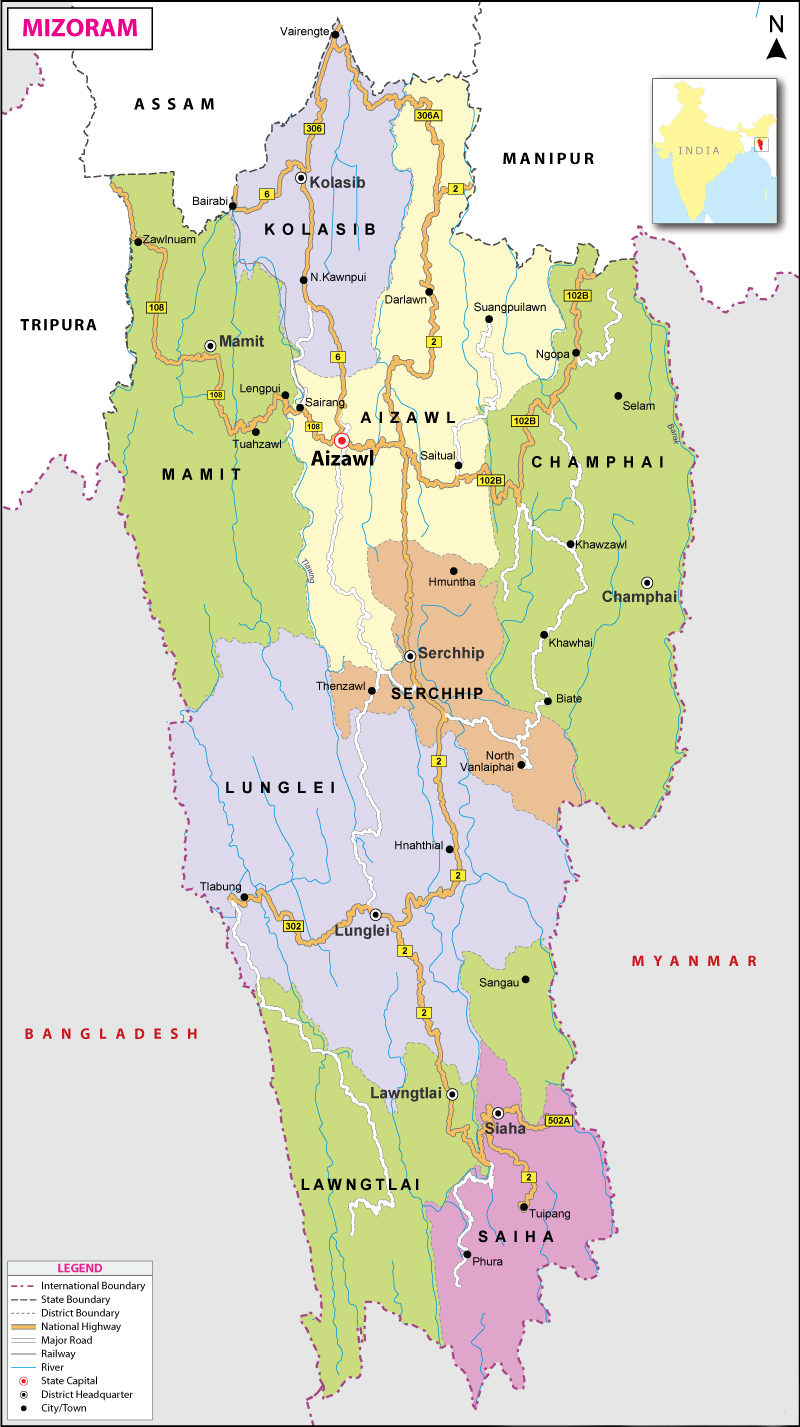Important Facts For Prelims
Chite Lui River
- 14 Jun 2023
- 3 min read
Why in News?
The Chite Lui River in Mizoram holds significant cultural and sentimental value for the people of the hilly northeastern state.
- However, the river is facing pollution and degradation due to unplanned urbanisation, encroachments, and businesses located near its banks.
What are the Key Aspects Concerning the Chite Lui River?
- About:
- The Chite Lui River is situated in an alluvial valley at an altitude of around 1,000 metres, the river originates from the Bawngkawn range in north Aizawl and flows for approximately 20 km before joining the River Tuirial.
- Main Threats and Challenges facing Chite Lui River:
- Urbanisation: The rapid growth of Aizawl city has led to unplanned construction activities on the banks and even on the river bed of Chite Lui River.
- Many houses, shops, garages, eateries and other establishments have encroached upon the river’s space and reduced its width and depth.
- The river also suffers from loss of natural vegetation and soil erosion due to deforestation and land use change.
- Pollution: The river has become a dumping ground for various kinds of waste generated by the urban population.
- The pollution affects the aquatic life, biodiversity and health of the river and its users.
- Urbanisation: The rapid growth of Aizawl city has led to unplanned construction activities on the banks and even on the river bed of Chite Lui River.
- Initiatives to Save Chite Lui:
- Zoram Research Foundation: This is a non-profit organisation that works for traditional water management in Mizoram.
- It started an initiative to save the Chite Lui River in 2007 by conducting surveys, awareness campaigns, clean-up drives and advocacy programs.
- It also formed a Save Chite Lui Coordination Committee composed of local leaders, activists, experts and volunteers to coordinate the efforts.
- Chite Lui (Prevention and Control of Water Pollution) Act, 2018: This is a legislation passed by the Mizoram government in 2018 to prohibit the dumping of animal carcasses, bio-medical waste or any garbage into the river.
- The act also empowers the state pollution control board to monitor and regulate the activities affecting the river’s quality and quantity.
- River Restoration Project: This is a project initiated by the Mizoram government to revive Chite Lui River by removing encroachments, restoring natural vegetation, constructing check dams, improving drainage and sewerage systems, and creating recreational facilities along the river.
- Zoram Research Foundation: This is a non-profit organisation that works for traditional water management in Mizoram.
Note:
- The largest river in Mizoram is Chhimtuipui, (138.46 km in length). It originates in Myanmar Burma. The river is in patches and has four tributaries.
- Some important and constructive rivers of Mizoram are the Tlawng, Tuirial and Tuivawl which course through the northern territory and ultimately join the Barak River in Assam.





